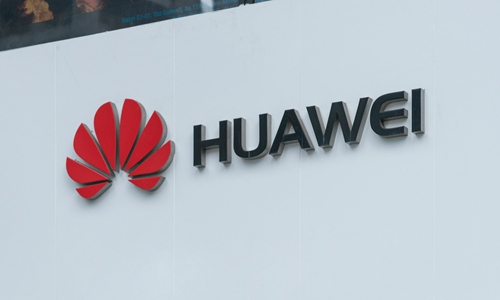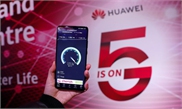
File photo
The US and some European governments' potential moves to exclude Huawei from a local 5G rollout would only exacerbate their telecom woes, which have been laid bare in recent days as millions of people work from home amid the exploding coronavirus outbreak, industry insiders said.In stark contrast, China's internet service has been running smoothly, even at the peak of the virus outbreak.
"We have been working with local governments to launch a series of products to prevent the epidemic, including establishing a 'dynamic travel card' that shows the various locations users have been to, and setting up a health information database for certain institutions," a spokesperson from telecom carrier China Mobile told the Global Times on Monday.
To date, China Mobile has collected information regarding COVID-19 from 13.67 million users and sent 15.6 billion notification messages about the coronavirus to enterprises in 31 provinces.
Chinese telecom carriers' active role in the battle against COVID-19 has put the mettle of their counterparts in the US into question. Some Chinese industry insiders questioned foreign telecom service providers for doing "too little" in helping curb the pandemic overseas.
"They could have helped governments identify the tracks of confirmed coronavirus cases. This is deemed as valuable information in systematic pandemic prevention," Xiang Ligang, director-general of the Beijing-based Information Consumption Alliance, told the Global Times.
Another lesson that foreign carriers can learn from China is how the next generation of 5G technology has been applied in the nation's fight against the coronavirus, observers said.
For example, 5G-powered temperature screening machines have been installed in many of China's airports, train stations and bus stations. Chinese netizens also watched the live construction of Huoshenshen Hospital streamed via the 5G network. The 5G network also enabled doctors across China to launch remote 5G video consultations.
After millions of people went online for work from home as part of the efforts to ease the spread of COVID-19, mass demand of broadband has reportedly strained internet networks in the UK and the US.
In the UK, telecom service providers including O2, EE, Vodafone and Three were reportedly having connectivity problems. Some people from the US also have experienced an overcrowded internet, adding difficulties for video calling and sending big email attachments, the New York Times reported.
Such cases were rare in China, except in several remote regions in Northern China's Inner Mongolia Autonomous Region. Chinese telecom service providers then swiftly helped improve the local network.
"China's underlying internet infrastructure is way ahead of foreign countries. The wired internet connection speed is about four times faster than the US," Xiang said.
China's household optical fiber coverage ratio, an important indicator for fiber-based broadband service that pipe the internet into homes, is 91 percent, while in the US it's about 25 percent, and major EU economies were generally under 25 percent.
As for wireless networks, China has deployed more than 5 million 4G base stations. Xiang estimated that the US' 4G base stations totaled 350,000 units.
"If the EU and US bans [Chinese tech company] Huawei from their local 5G construction, it would not only delay their 5G rollout but also add up to their costs. How could they cope with massive internet traffic? How could they have the ability to apply 5G tech in epidemic prevention?" Xiang asked.
China Mobile said it plans to build more than 300,000 5G base stations by the end of 2020. It is estimated that at least 550,000 5G base stations will be built in China by the end of 2020.




